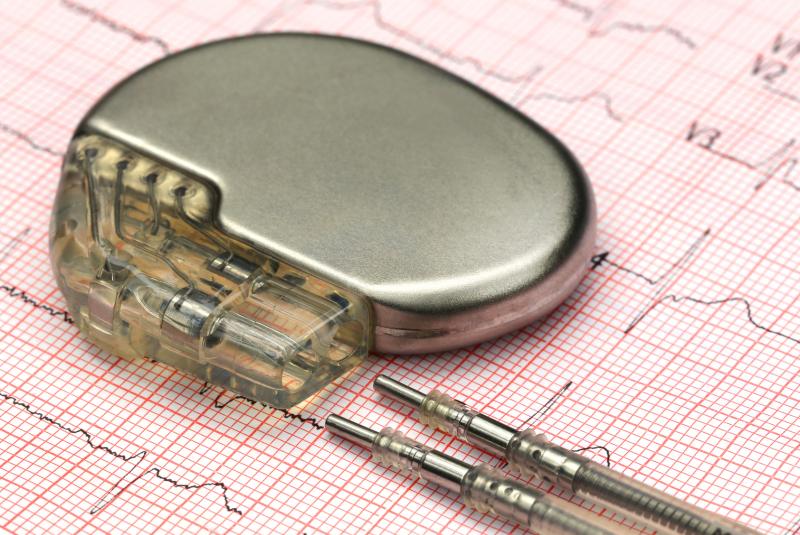 Data retrieved from a cardiac pacemaker cast doubt on Compton’s statement about the fire that burned his home, leading them to suspect him of deliberate arson and insurance fraud.
Data retrieved from a cardiac pacemaker cast doubt on Compton’s statement about the fire that burned his home, leading them to suspect him of deliberate arson and insurance fraud.Reactive antitachycardia pacing (ATP), a new-generation ATP, safely reduces the burden of atrial fibrillation (AF) in patients with cardiac resynchronization therapy (CRT) device implants, according to a recent study.
“To the best of our knowledge, this is the first study to evaluate the efficacy and safety of Reactive ATP for the management of atrial tachyarrhythmias (ATAs) in patients implanted with CRT devices due to a severely depressed cardiac function,” said researchers, pointing out that the drop in AF burden in turn led to lower heart failure hospitalization rates.
Of the 72 CRT patients (mean age, 67.0±14.0 years; 76 percent male) enrolled, 44 had devices capable of Reactive ATP and were assigned as the ATP group. The remaining 28 had implants that were unable to run ATP and were designated as controls. AF burden in the respective groups at baseline was 6.1±18.2 percent and 5.9±20.0 percent, respectively (p=0.96). [J Cardiol 2020;75:559-566]
Over 832±489 days of follow-up, 52 percent and 46 percent of the ATP and control groups experienced a total of 5,977 and 4,694 ATA episodes lasting for at least 1 minute, respectively. The Reactive ATP had a median efficacy of 23.6 percent, resulting in a significant drop in AF burden 6 months after programming (6.1±18.2 percent to 2.0±5.4 percent; p=0.0083).
No such temporal change was reported for the control group. Throughout the follow-up period, patients in the ATP group consistently had lower AF burden than their control counterparts, as well reporting shorter ATA episodes.
This between-group difference in AF burden translated to better clinical outcomes for the ATP patients. Significantly less patients with ATP-capable CRT devices had to be hospitalized for heart failure (log-rank p=0.041). Ventricular arrhythmia was also significantly rarer (log-rank p=0.039).
Univariate analysis found that Reactive ATP was a significant predictor of freedom from heart failure hospitalization (hazard ratio, 0.43, 95 percent confidence interval, 0.19–0.99; p=0.049). In comparison, both groups saw comparable numbers of deaths, cardiac deaths and progressions to persistent AF.
In terms of safety, the researchers reported no severe complications. Battery drainage was not significantly different between those with vs without ATP deliveries (p=0.84). There were also no complaints of chest symptoms.
“Reactive ATP reduced the AF burden and heart failure hospitalization in patients implanted with CRT devices. Reactive ATP can be an effective and safe option for the management of ATAs in CRT patients,” the researchers said.
Several limitations warrant consideration. These include the single-centre, retrospective, nonrandomized design of the study, its small sample size, and the small number of battery drainage episodes, all of which may have affected the results and the subsequent interpretations.
“Further prospective, multicentre studies, including a larger number of patients with CRT devices, are warranted to confirm these findings,” the researchers said.